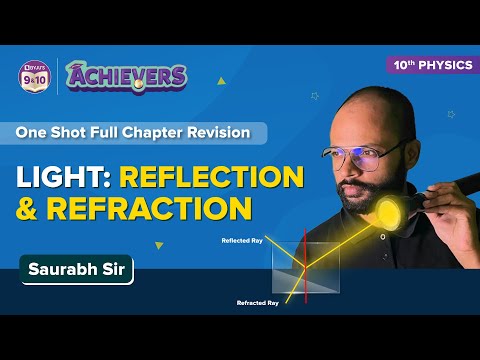Aim
To find the focal length of a convex mirror, using a convex lens.
Apparatus and Materials Required
- An optical bench
- A convex mirror
- Three needles
- A half-metre scale
- A convex lens
- Four uprights with at least two having lateral motion
- A lens holder
Theory
A convex lens generates a real image of a subject. A convex mirror is positioned in the way of the light rays between the image and lens such that the light rays, after refraction through the lens, normally strike on the mirror’s surface. The light rays are then reflected back, retracing their trajectory and generating an image of the object.
The focal length of the mirror is calculated as,
f = R/2,
where f is the focal length mirror and R is the radius of curvature.
Diagram

Procedure
- Calculate the probable focal length of the convex lens by focussing the image of a distant subject (example: a tree) on a clear screen and calculating the length between the image and the lens.
- Fix the object needle, the mirror, and the lens on the optical bench as shown in the above figure. Then adjust their height in a way that the needle’s tip, the pole of the mirror, and the lens’s optical centre lie at the same horizontal alignment.
- Place the object pin between 2F and F. Tune the mirror and the needle in such a way that there is no significant parallax between the object needle’s tip and its inverted image produced at O.
4. Measure the positions of the lens (L), the mirror (M), and the object (O).
5. Take out the mirror and place another needle, C, on the same side of the mirror. Tune the needle C in such a way as to remove the parallax between the needle C and the image of object O. Note down the position of C.
6. Repeat procedures 3 to 5 to note down at least five various locations of the lens and the object.
7. Calculate the index correction between the imaging needle and the mirror as described previously.
Observation
- The focal length of the convex lens, F = _____ cm.
- The actual length of the index needle, L = _____ cm.
- Observed length of the index needle = Position of mirror upright – Position of pin upright on the scale = _____ cm
4. Index correction, e = Actual length – observed length = … cm.
|
Upright Position of |
||||||
|
S. No |
Object pin O (cm) |
Convex Lens L (cm) |
Convex Mirror P (cm) |
Image pin C (cm) |
R = PC (cm) |
Focal Length f |
|
1 2 — 5 |
||||||
Calculations
Determine the mean value of the radius of curvature of the convex mirror, R, and determine its focal length using the following relation
f = R/2 = ____ cm
Sources of Error
1. Parallax cannot be corrected completely.
2. The uprights are not ideally vertical.
3. The pole of the mirror, the tip of the object needle and the optical centre are not placed in a line.
Result
The focal length of the given convex mirror is …… cm. Here f is the mean value of the focal length.
Viva Voce
1. What are the main types of mirrors?
Answer: There are two main types of mirrors, and they are as follows:
- Plane Mirror
- Spherical Mirror
2. Is silvering in mirrors generated by applying a silver coating or some other substances?
Answer: In inexpensive mirrors, silvering is generated by the application of mercuric oxide, while the silver coating in excellent quality mirrors is generated by the application of silver nitrate.
3. What kind of mirror is typically used for the dressing desk?
Answer: A plane mirror is employed in a dressing desk as it provides a virtual image of the exact dimension of the object positioned in front of it.
4. What is meant by the index error?
Answer: The variation between the real distance between the point object and the mirror’s pole and the recorded distance calculated on the optical bench is known as the index error. It is also called the bench error.
Index Correction = Actual Distance – Observed Distance
Index Error = Observed Distances – Actual Distance
5. What is meant by focal length?
Answer: Focal length is the length between the optical centre and the principal focus of a lens.
6. Is a convex mirror a transparent or opaque optical tool?
Answer: A convex mirror is an opaque optical tool.
7. What happens to the incident light ray when it falls on a convex lens?
Answer: A convex lens coincides with the incident light rays approaching the principal axis.
8. Which lens is called a diverging lens?
Answer: A concave lens is called a diverging lens.
9. When a convex lens is paired with a concave lens, what will the image’s resolution be?
Answer: A sharper image is produced when a convex lens is combined with a concave lens.
10. What is the principle behind the working of a lens?
Answer: Refraction is the principle behind the working of a lens.
11. What is the type of lens found in the human eye?
Answer: Biconvex lens is the lens found in the human eye.
|
Related Articles: |
Watch the video and revise all the important concepts in the chapter Light Reflection and Refraction Class 10

Stay tuned to BYJU’S to get the latest notification on CBSE, along with the CBSE syllabus, sample papers, marking scheme, and more.